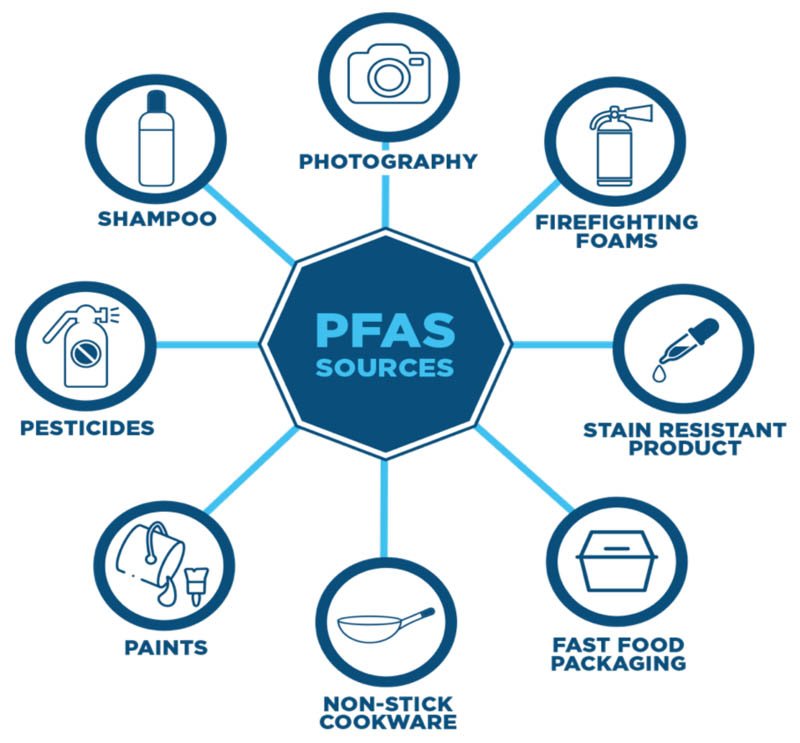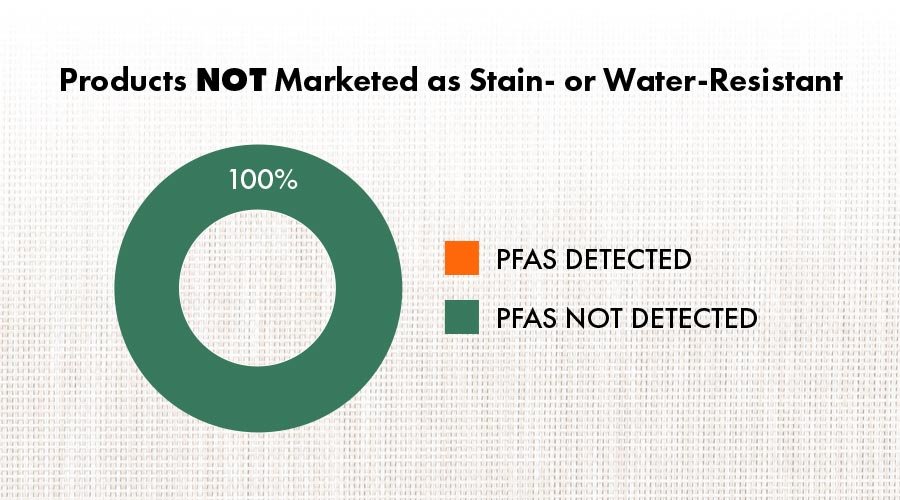For decades, makers of textiles including apparel and home furnishings have turned to the persistent toxic chemicals known as per- and polyfluoroalkyl substances (PFAS) to make their products resist water and stains.

But their choice to use these “forever chemicals” has contributed to contamination of drinking water, homes, people, fish, and wildlife with chemicals that can cause cancer, suppress the immune system, increase cholesterol, and lead to other serious health problems.
Even though forever chemicals are in many of the items we use every day, we know shockingly little about which products contain this harmful chemical class—with almost no product labels disclosing their presence.

To uncover this hidden information, “Toxic-Free Future” investigated three kinds of commonly used products, purchased from 10 major retailers. They tested for the presence of forever chemicals in the three categories of products:
- outdoor apparel,
- bedding, and
- tablecloths and napkins
20 items were selected from each of the three categories, choosing mainly items advertised as stain- or water-resistant. They purchased the items from the following retailers: Amazon, Bed Bath & Beyond, Costco, Dick’s Sporting Goods, Kohl’s, Macy’s, REI, Target, TJX, and Walmart.
The team then screened the 60 items for total fluorine, as fluorine may indicate the presence of forever chemicals, then commissioned PFAS testing of items with fluorine above the screening level. Analysis for total fluorine and PFAS was conducted at independent laboratories.

The study found that 72% of products labeled “stain-resistant” or “water-resistant” contained “Forever Chemicals”—the abbreviation for a group of manufactured toxic chemicals that have been linked to cancer, hormone disruption, harm to the immune system, and other serious health concerns.
The widespread application of PFAS to textiles bears significant responsibility for a toxic trail of pollution that begins with the manufacture of the chemicals, continues as they are applied to fabric and made into products, enters homes, schools, and workplaces as finished items are sold and used, and ends with widespread contamination of air and water after disposal of the products.
Safer alternatives can be used to prevent the contamination of homes, bodies, wildlife, food, and drinking water with PFAS. Retailers, manufacturers, and state and federal leaders each have a role to play to bring a swift end to this unnecessary use of PFAS.
This article is based on “Toxic-Free Future” study; edited by Clean-Future Team






